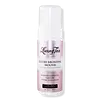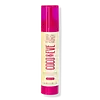What's inside
What's inside
 Key Ingredients
Key Ingredients

 Benefits
Benefits

 Concerns
Concerns

 Ingredients Side-by-side
Ingredients Side-by-side

Water
Skin ConditioningDihydroxyacetone
Skin ConditioningPropylene Glycol
HumectantEthoxydiglycol
HumectantErythrulose
TanningPanthenol
Skin ConditioningDecyl Glucoside
CleansingDimethicone
EmollientPhenoxyethanol
PreservativeEthylhexylglycerin
Skin ConditioningJuglans Nigra Shell Extract
AstringentAloe Barbadensis Leaf Juice
Skin ConditioningParfum
MaskingHydroxypropyl Methylcellulose
Emulsion StabilisingSodium Bisulfite
AntioxidantCI 16035
Cosmetic ColorantCI 14700
Cosmetic ColorantCI 19140
Cosmetic ColorantCaramel
Cosmetic ColorantCI 42090
Cosmetic ColorantWater, Dihydroxyacetone, Propylene Glycol, Ethoxydiglycol, Erythrulose, Panthenol, Decyl Glucoside, Dimethicone, Phenoxyethanol, Ethylhexylglycerin, Juglans Nigra Shell Extract, Aloe Barbadensis Leaf Juice, Parfum, Hydroxypropyl Methylcellulose, Sodium Bisulfite, CI 16035, CI 14700, CI 19140, Caramel, CI 42090
Water
Skin ConditioningDihydroxyacetone
Skin ConditioningPropanediol
SolventErythrulose
TanningHylocereus Undatus Fruit Extract
Skin ConditioningJuglans Regia Shell Extract
Skin ConditioningMusa Sapientum Fruit Extract
Skin ConditioningCocos Nucifera Fruit Extract
EmollientHyaluronic Acid
HumectantHydrolyzed Hyaluronic Acid
HumectantSodium Hyaluronate
HumectantSodium Hyaluronate Crosspolymer
HumectantHydrolyzed Glycosaminoglycans
HumectantTocopherol
AntioxidantCitrus Nobilis Peel Oil
MaskingHelianthus Annuus Seed Oil
EmollientPolyglyceryl-6 Caprylate/Caprate
StabilisingPolyglyceryl-4 Laurate/Sebacate
SolventGlycerin
HumectantHydroxyethyl Acrylate/Sodium Acryloyldimethyl Taurate Copolymer
Emulsion StabilisingCitric Acid
BufferingParfum
MaskingPhenoxyethanol
PreservativeSodium Benzoate
MaskingPotassium Sorbate
PreservativeEthylhexylglycerin
Skin ConditioningSodium Metabisulfite
AntioxidantCI 16035
Cosmetic ColorantWater, Dihydroxyacetone, Propanediol, Erythrulose, Hylocereus Undatus Fruit Extract, Juglans Regia Shell Extract, Musa Sapientum Fruit Extract, Cocos Nucifera Fruit Extract, Hyaluronic Acid, Hydrolyzed Hyaluronic Acid, Sodium Hyaluronate, Sodium Hyaluronate Crosspolymer, Hydrolyzed Glycosaminoglycans, Tocopherol, Citrus Nobilis Peel Oil, Helianthus Annuus Seed Oil, Polyglyceryl-6 Caprylate/Caprate, Polyglyceryl-4 Laurate/Sebacate, Glycerin, Hydroxyethyl Acrylate/Sodium Acryloyldimethyl Taurate Copolymer, Citric Acid, Parfum, Phenoxyethanol, Sodium Benzoate, Potassium Sorbate, Ethylhexylglycerin, Sodium Metabisulfite, CI 16035
Ingredients Explained
These ingredients are found in both products.
Ingredients higher up in an ingredient list are typically present in a larger amount.
Ci 16035 is a synthetic dark-red dye. This dye is created from an acid called Allura red AC, an azo dye.
Azo dyes need to be purified thoroughly before use. This makes them more stable and longer lasting.
This dye is commonly used in foods, approved by both the FDA and EFSA.
Learn more about CI 16035Dihydroxyacetone, or DHA, is a simple sugar. It is frequently used in self-tanning products.
DHA binds to the amino acids in your dead skin cells to create a brown/orange color. Darkening begins to kick in a few hours after application and will continue to develop for up to 3 days. This ingredient can be drying.
Both the US and the EU have approved DHA in self-tanning products. In the EU, DHA is allowed at a maximum concentration of 10%. Most tanning products usually contain amounts between 3-5%.
If you are pregnant or have underlying medical conditions, it is best to speak with a dermatologist about using self-tanning products.
Learn more about DihydroxyacetoneWe don't have a description for Erythrulose yet.
Ethylhexylglycerin (we can't pronounce this either) is commonly used as a preservative and skin softener. It is derived from glyceryl.
You might see Ethylhexylglycerin often paired with other preservatives such as phenoxyethanol. Ethylhexylglycerin has been found to increase the effectiveness of these other preservatives.
Parfum is a catch-all term for an ingredient or more that is used to give a scent to products.
Also called "fragrance", this ingredient can be a blend of hundreds of chemicals or plant oils. This means every product with "fragrance" or "parfum" in the ingredients list is a different mixture.
For instance, Habanolide is a proprietary trade name for a specific aroma chemical. When used as a fragrance ingredient in cosmetics, most aroma chemicals fall under the broad labeling category of “FRAGRANCE” or “PARFUM” according to EU and US regulations.
The term 'parfum' or 'fragrance' is not regulated in many countries. In many cases, it is up to the brand to define this term.
For instance, many brands choose to label themselves as "fragrance-free" because they are not using synthetic fragrances. However, their products may still contain ingredients such as essential oils that are considered a fragrance by INCI standards.
One example is Calendula flower extract. Calendula is an essential oil that still imparts a scent or 'fragrance'.
Depending on the blend, the ingredients in the mixture can cause allergies and sensitivities on the skin. Some ingredients that are known EU allergens include linalool and citronellol.
Parfum can also be used to mask or cover an unpleasant scent.
The bottom line is: not all fragrances/parfum/ingredients are created equally. If you are worried about fragrances, we recommend taking a closer look at an ingredient. And of course, we always recommend speaking with a professional.
Learn more about ParfumPhenoxyethanol is a preservative that has germicide, antimicrobial, and aromatic properties. Studies show that phenoxyethanol can prevent microbial growth. By itself, it has a scent that is similar to that of a rose.
It's often used in formulations along with Caprylyl Glycol to preserve the shelf life of products.
Water. It's the most common cosmetic ingredient of all. You'll usually see it at the top of ingredient lists, meaning that it makes up the largest part of the product.
So why is it so popular? Water most often acts as a solvent - this means that it helps dissolve other ingredients into the formulation.
You'll also recognize water as that liquid we all need to stay alive. If you see this, drink a glass of water. Stay hydrated!
Learn more about Water